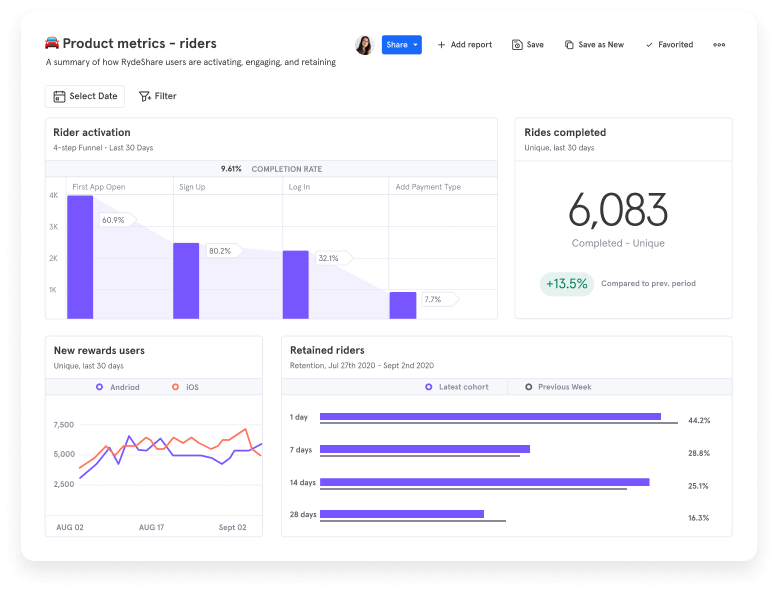In the next stage of product analytics maturity, your metrics and analysis aren’t yet as focused as they could be — but you have more of a sense of what you want to track and are willing to invest in the tools and resources needed to answer questions.
At this point, you recognize that product analytics is important, but aren’t quite sure how to prioritize metrics and use them to guide product development. You’ve moved on from “just curling dumbbells” to the bench press — and have added in a mile-long run for good measure.
You’re using data to inform product decisions, but not yet to propel them forward in an iterative or systematic way.

You’re beginning to use product analysis on a regular basis, but don’t know how to use it as a driver for product development.
Businesses have a lot of information on their hands — but to get the most out of it, they rely on analysts to uncover meaningful insights. Individuals and teams are empowered to look at data but not to run analysis; instead, they are trained to send questions to the queue. This can lead to bottlenecks in getting necessary information to Product, Design, and other departments.
Bringing your product analytics activity to the next level requires a fundamental shift in the organization toward data democratization and leveraging data focused on product usage. More than that, it means utilizing a tool that can easily and quickly tell you what users do in your product and what’s working via detailed user tracking, metadata and more. Not every tool will stand up at this stage.

Explore Mixpanel
See how product and growth teams use Mixpanel’s powerful reports to answer any question.
Try It With Sample DataCommon markers of Intermediate stage
In this stage, some businesses will opt for codeless product analytics tools in addition to Business Intelligence (BI). This means they begin tracking all events up front, leaving the act of determining their product analytics strategy for later. The resulting implementations are easier at first, with minimal effort needed from developers resources.
However, codeless implementations can lead to serious issues down the line— missing or inaccurate data, broken tracking, exporting difficulties, and heightened security risks. A codeless solution will also limit your depth of analysis by not capturing all the metadata associated with your events. You’ll soon reach a limit on the insights you can uncover.
Example of Intermediate
product analytics maturity
Questions you can answer
In this stage, you can assess what’s happening to your product:
- How many daily/weekly/monthly active users does my product have?
- What is the average retention rate of all my users?
- Where in my funnel do users drop off?
- What are the most common user journeys?
In this stage, you can assess what’s happening to your product:
For Example
At some point, the ridesharing app decides to step up their product analytics game.
They begin to gather much more data. They’re not agile enough at finding product insights due to bottlenecks with analytics teams or the limitations of a BI tool. Because they don’t want to fully commit to product analytics, they seek out codeless tools to save some engineering resources and accept gathering only high-level insights.
They’ve got the right idea but lack the focus to turn it into productive action.
How to move on from Intermediate
You achieve more mature product analytics by asking questions of your analysis. To advance even further, it’s time to start tying product analytics to other teams and processes.
To move to the Advanced stage, you’ll need to acquire buy-in for data democracy, and lay the groundwork for an analytics strategy and strategic implementation from the start. Buy-in means you’ll be able to implement a custom solution needed for more robust product analytics capabilities.
![pas-img04[1]](https://mixpanel.com/wp-content/uploads/2020/11/pas-img041-1.png)
